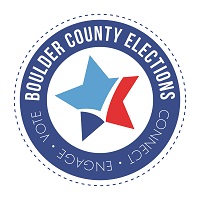What changes may occur as a result of reprecincting?
- As precinct boundaries cannot cross Congressional, State House or State Senate District boundaries, it may be necessary to change our current precinct geographic boundaries to comply with the court approved independent commission maps.
- Precinct population size is set pursuant to Colorado Revised Statute 1-5-101 (3) (a) and (b). Population growth and active registered voter count trends are reviewed for each precinct and change recommendations made accordingly.
- For example, if a precinct voter count is growing, then a new precinct may be added. Conversely, if the precinct numbers are low or not growing, a precinct may be combined with an adjacent precinct.
- Note: Since reprecincting was last conducted, the Colorado voting model shifted from precinct driven voting locations to a mail ballot voting model (adopted in 2013). As a result, we now have the opportunity to reduce the overall number of precincts. Having fewer precincts helps streamline election processes and simplifies the ballot development process for future elections.
- Precinct shapes are then used as building blocks by local jurisdictions to create or update their own districts. Political parties also use the precinct information for caucus planning.
What does redistricting/reprecincting mean for voters?
As a voter, redistricting can have an impact on which congressional, state senate and state house district you are eligible to vote for. Reprecincting, on the other hand, is the administrative act of implementing new precinct maps in accordance with statue.
What is the role of Clerk’s office in reprecincting?
- We rely on precincts for the purpose of conducting and administering elections.
- We review the approved independent commission maps and count of active registered voters within each census block shape to evaluate if our current precincts need to be amended or combined and if any new precincts need to be created.
- In January 2022, reprecincting recommendations will be submitted by our office to the board of county commissioners for approval.
- Once the board approves, our office will update information in the statewide voter registration database for registered voters who are impacted.
What does your precinct number mean?
The full precinct number is 10-digits. It tells you what Congressional, State Senate, and State House Districts your address is assigned to. The number also contains a county code and the localized precinct number.
Here is an example: 2-17-12-07-212
This number means the following:
2nd Congressional District
17th State Senate District
12th State House District
07 – Represents the County Code (Boulder County is 07)
212 – Local precinct in Boulder County
What district numbers are changing as a result of redistricting?
Based upon the approved independent commission maps, Boulder County will experience the below noted district changes. Residents should refer to the approved independent commission maps to determine how it may impact which districts now represent them (or will after redistricting is complete).
| District | Before 2021 Redistricting | After 2021 Redistricting |
| Congressional | CD 2, CD 4 | CD 2 |
| Precinct | 240 precincts | - Reduced number of precincts
- Renumbered precincts
- 3-digit precinct number changed for most voters as a result of renumbering |
| State House | 10, 11, 12, 13, 33 | 10, 11, 12, 19, 49 |
| State Senate | 16, 17, 18 | 15, 17, 18 |


